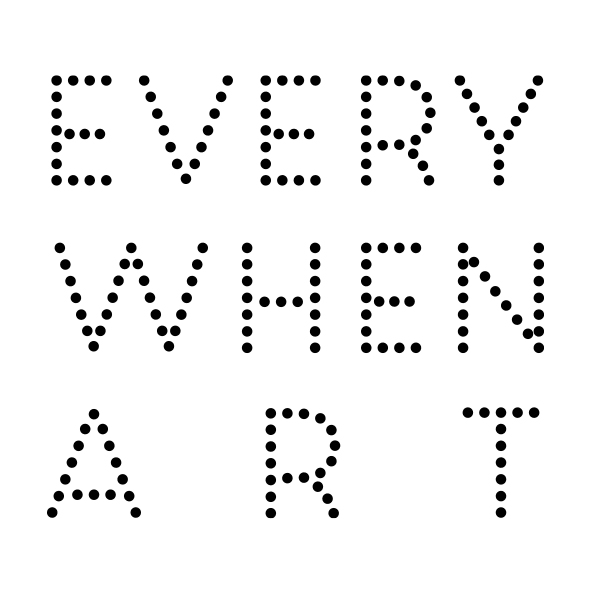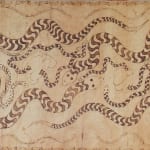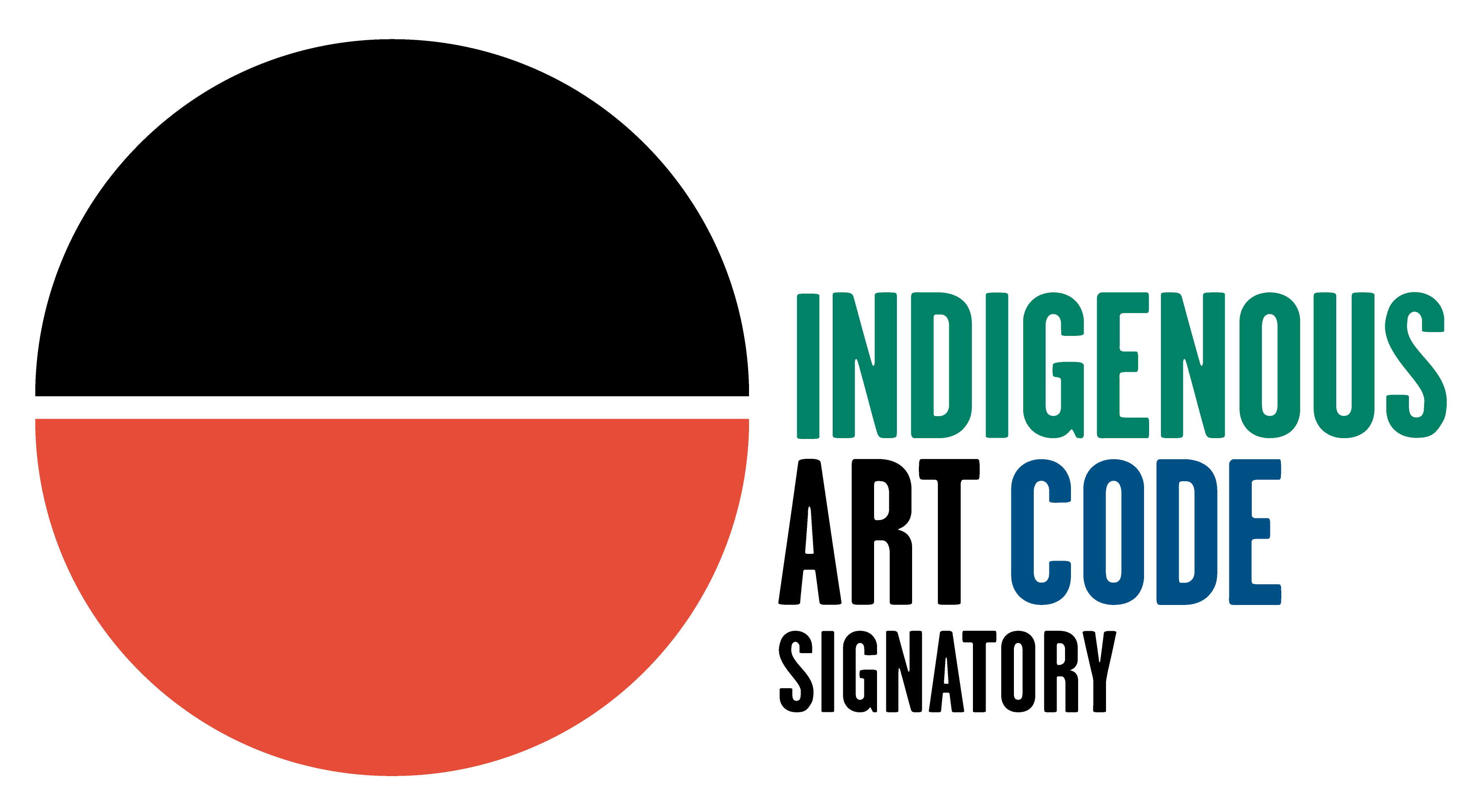Dianne Strangways Pitjantjatjara, b. 1959
23 5/8 x 47 1/4 in
Walka is Desert design and inextricably linked with Tjukurpa: the Law and way of life of Anangu (Central and Western Desert Aboriginal people). The symbols were traditionally used in cave, ground and body paintings, in story telling, teaching and signalling inheritance. Meaning of the designs depends on its subject and particular people are responsible for their re-creation and teaching according to the Tjukurpa. Highly experienced craftspeople have grown up making traditional tools and weapons under the instruction of their elders. They now apply this knowledge and express their world through art such as this.
Dianne doesn’t elaborate on the stories behind her walka, however she shows many of the animals and plants that populate the lands. Their various ancestors were responsible for creating important parts of her country and way of life. The most common snakes to appear in design are the kuniya, liru and wanampi: pythons, deadly snakes and water serpents, guardians of waterholes. This walka is unusual for showing snakes hatching from their eggs.
Dianne has also shown a variety of lizards. Kurkati, tinka, milpali or sand goannas live in the sand hills and plains country. The ngintaka, a large spotted perentie lizard is more often found in rocky areas and both these lizards have always been an important source of kuka (meat) for An angu of this area. They are still hunted in the spring and summer time when they have ended their underground hibernation and can easily be tracked across the red sands.





